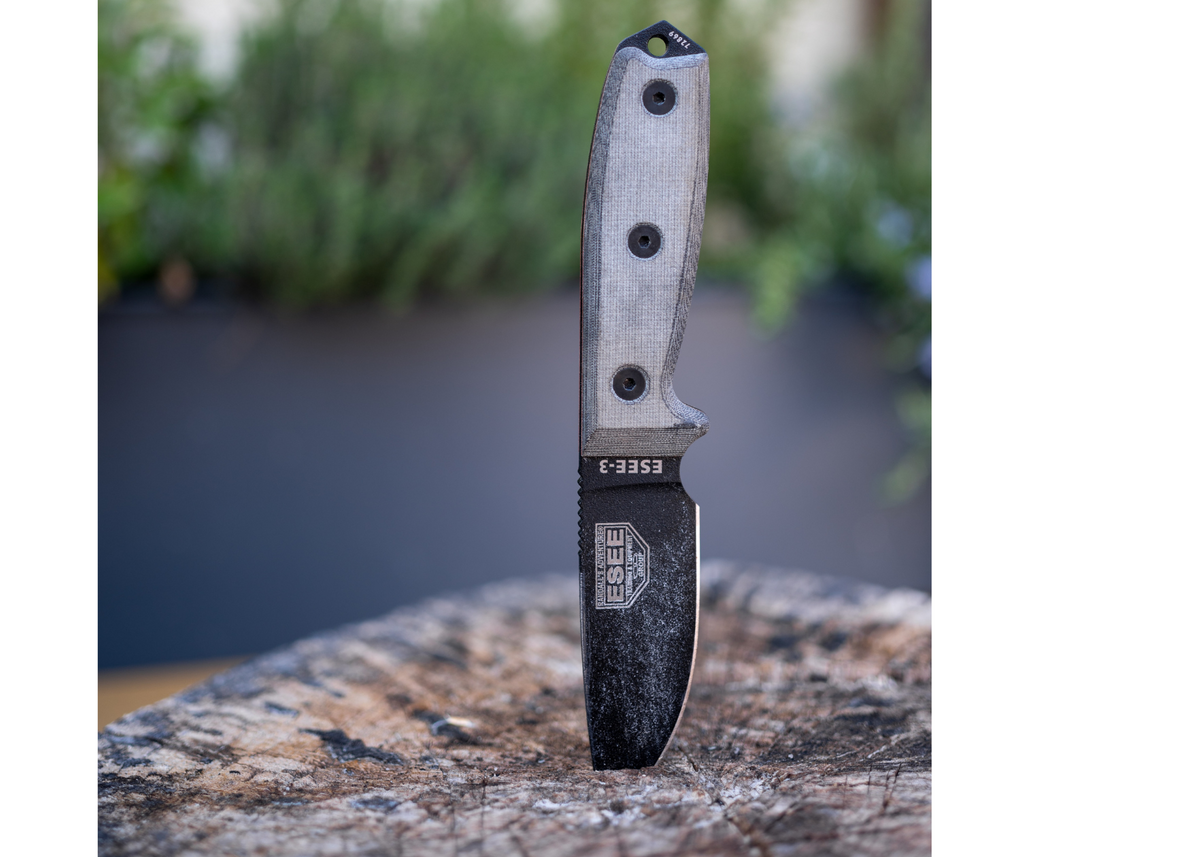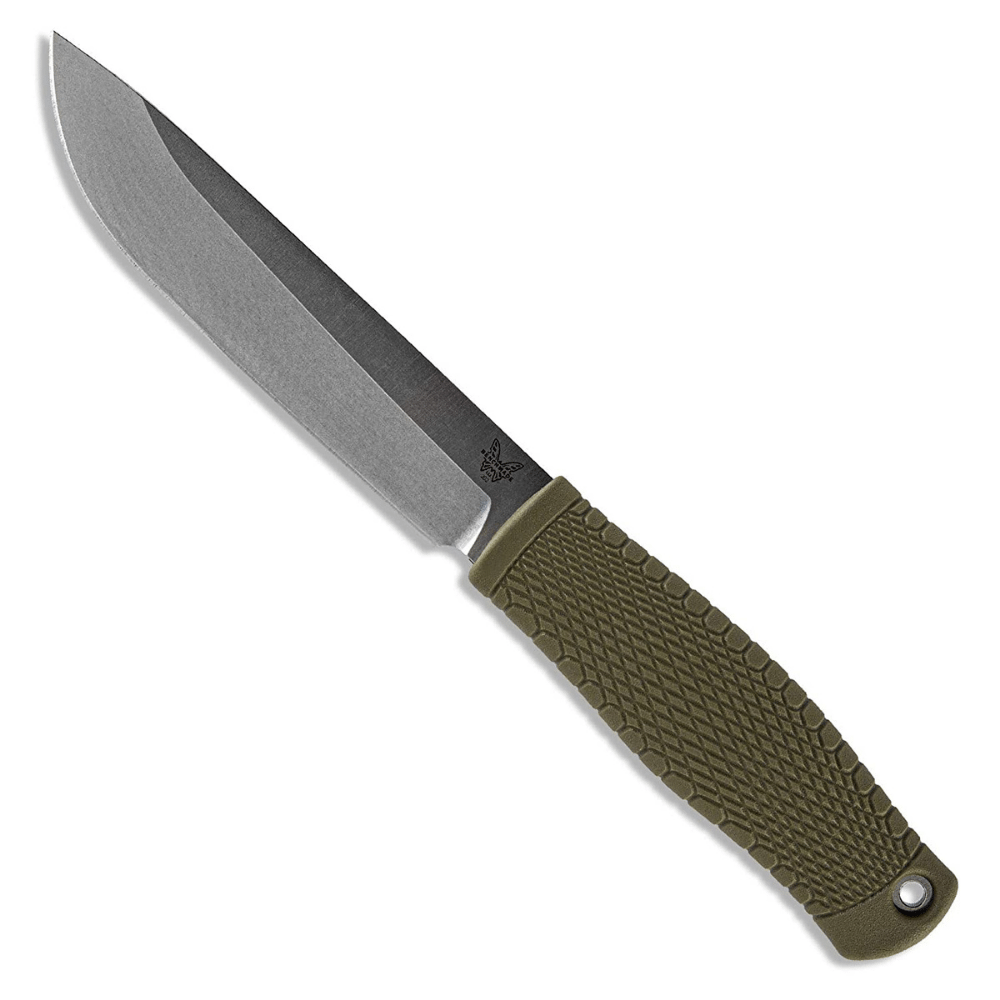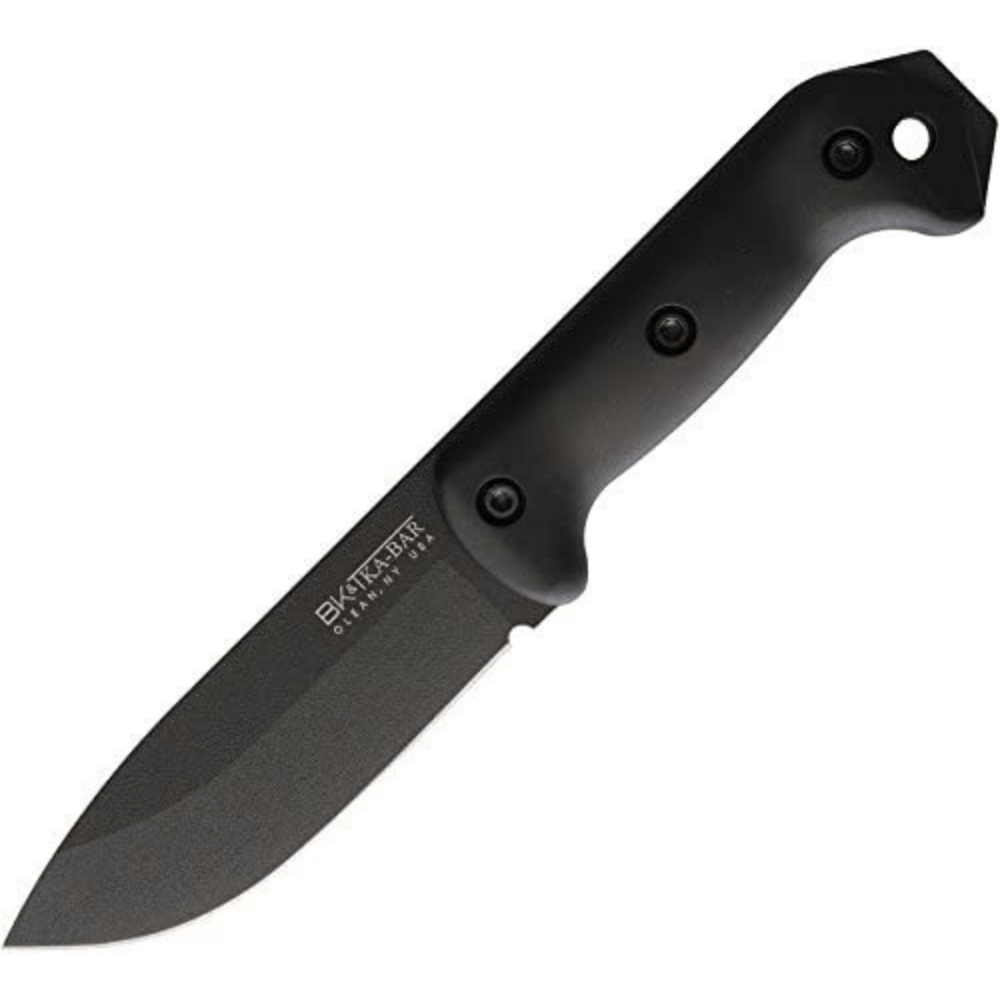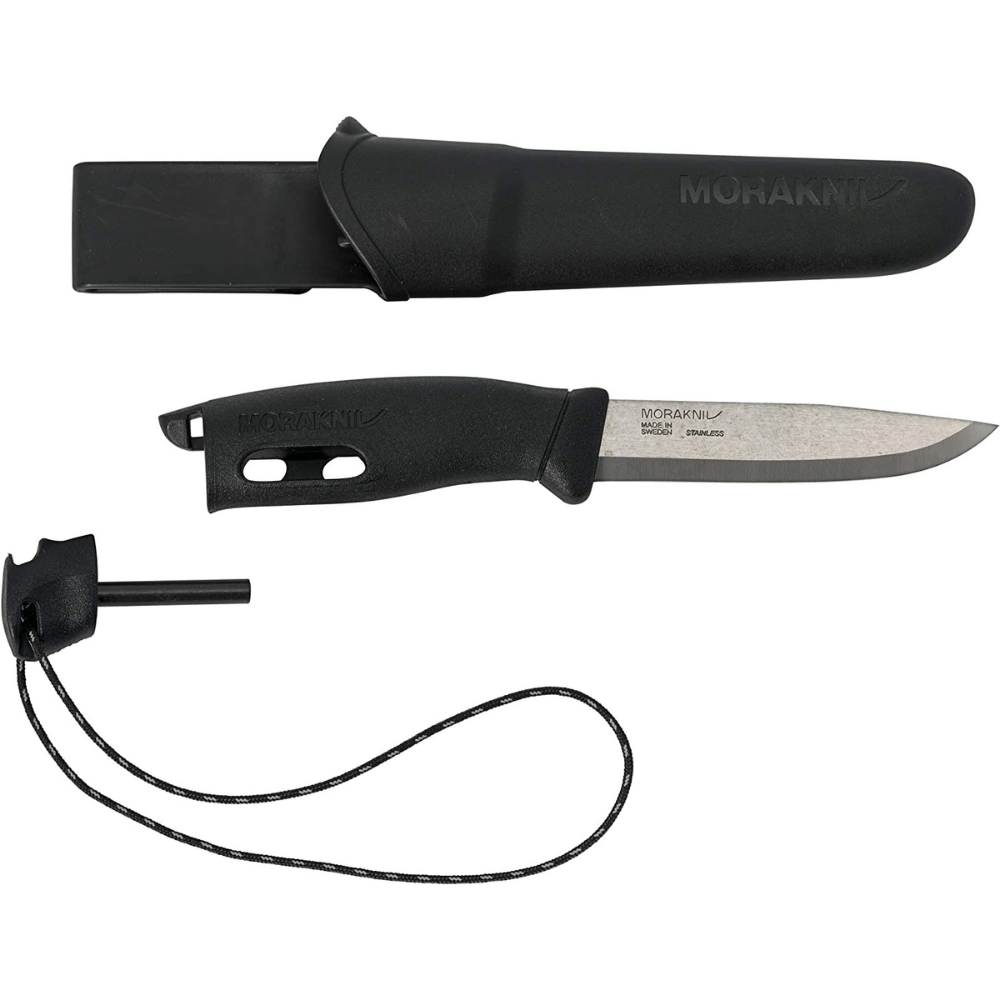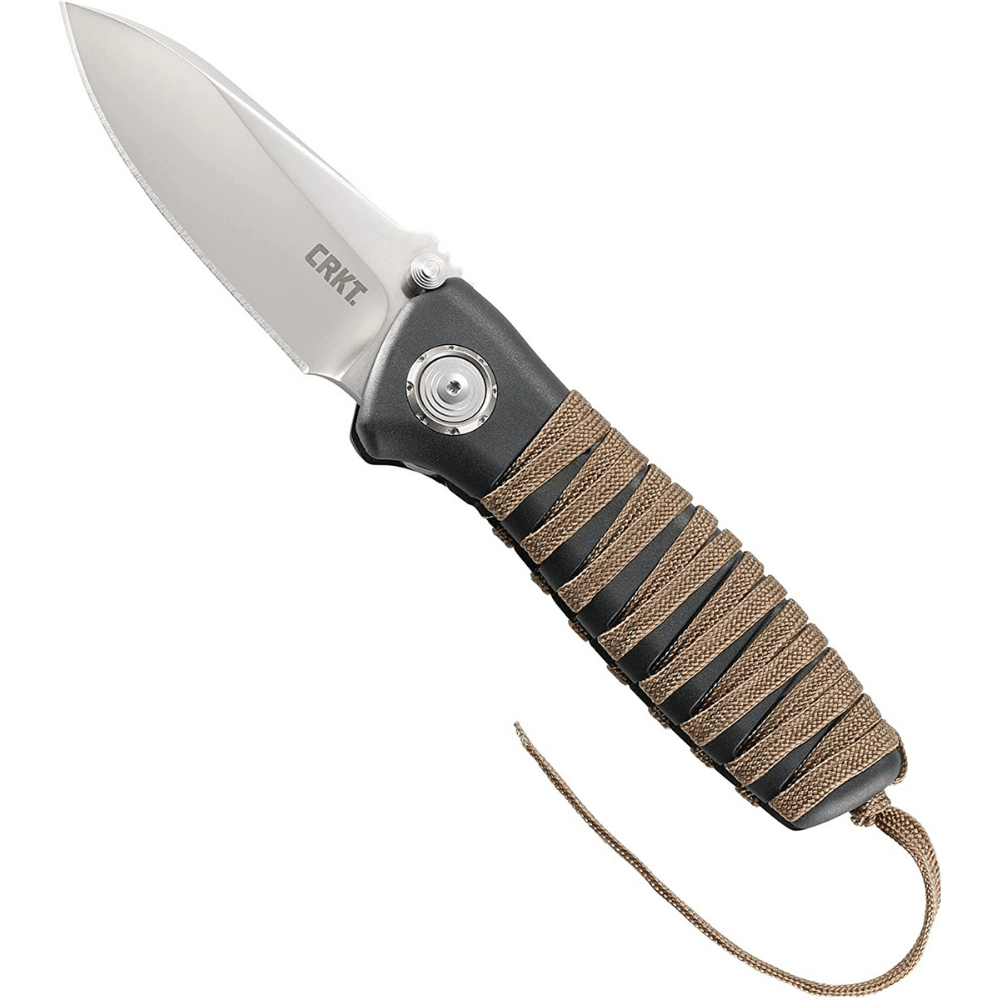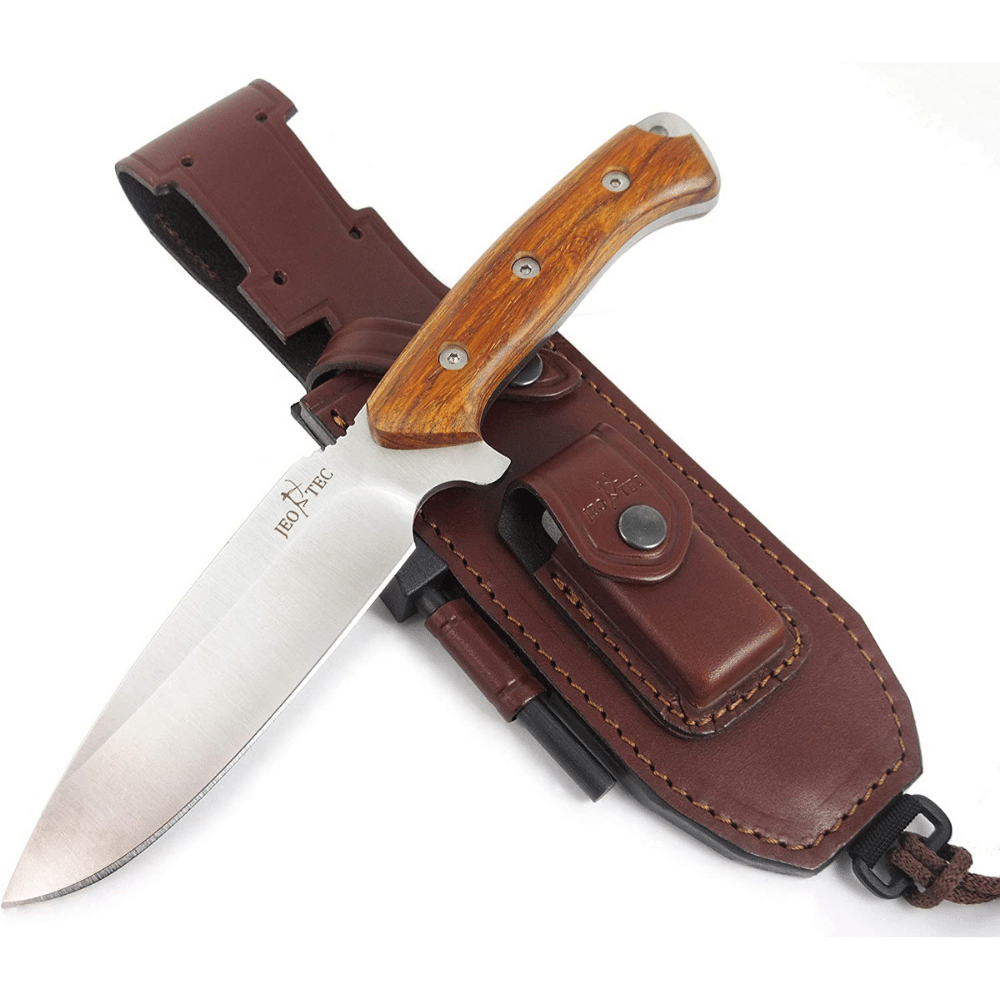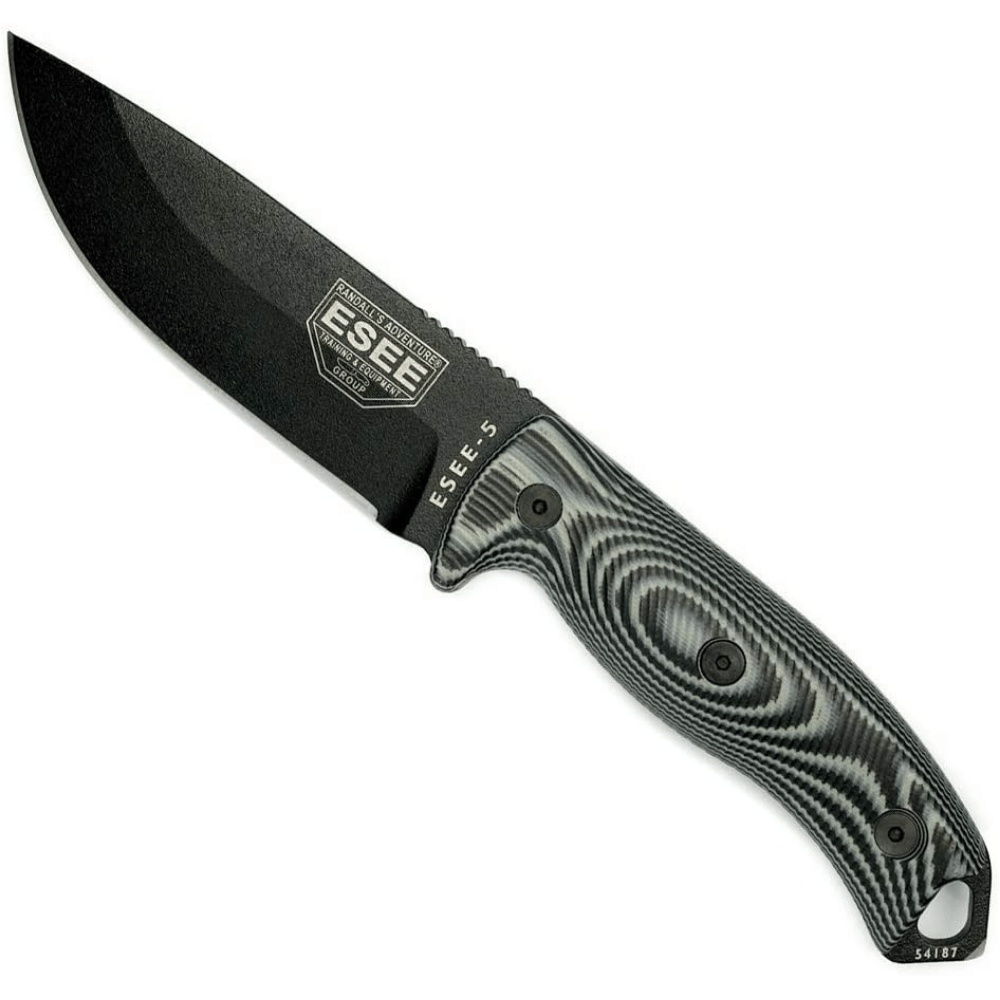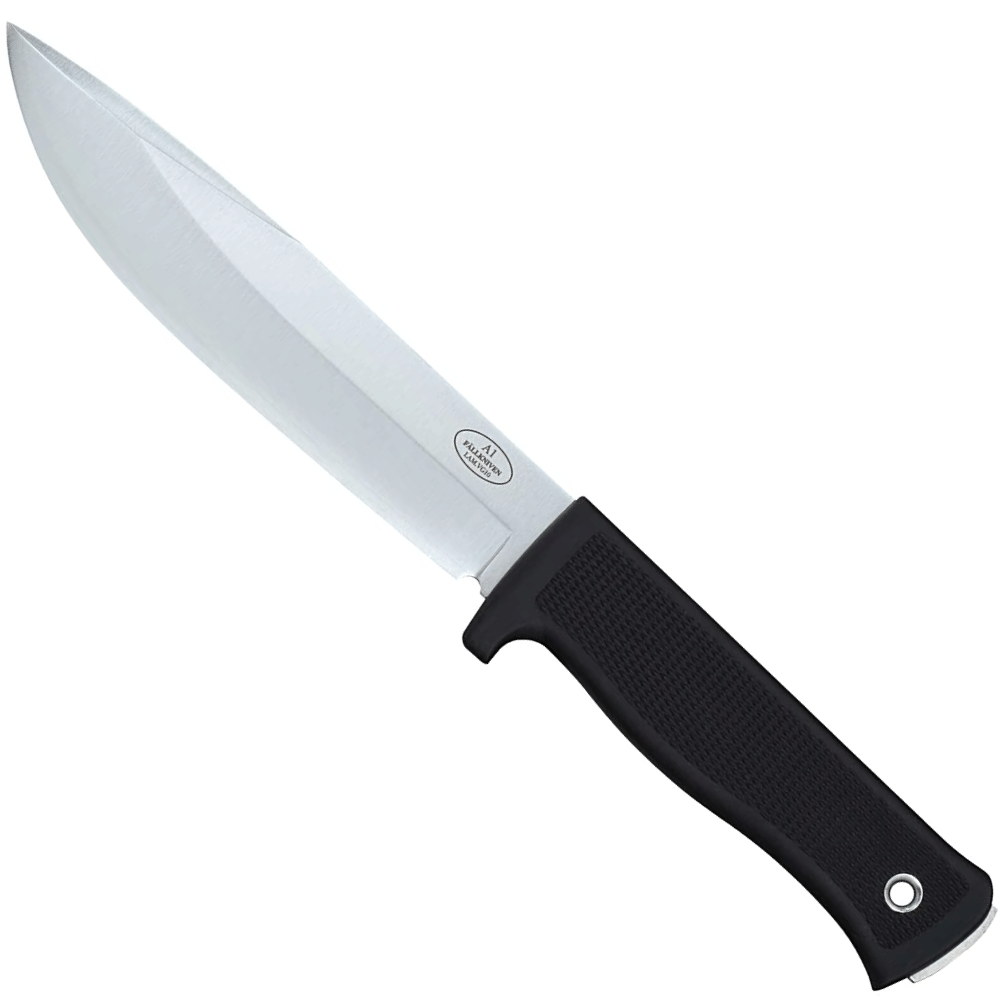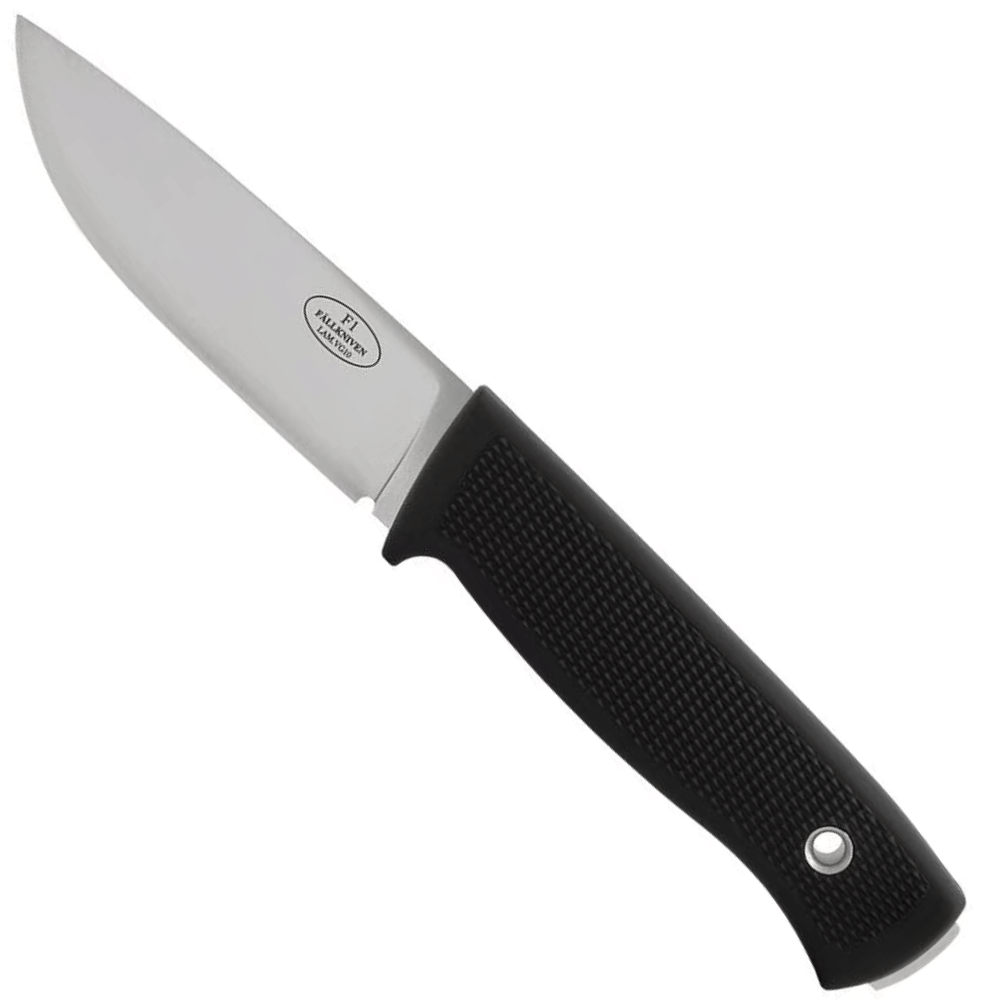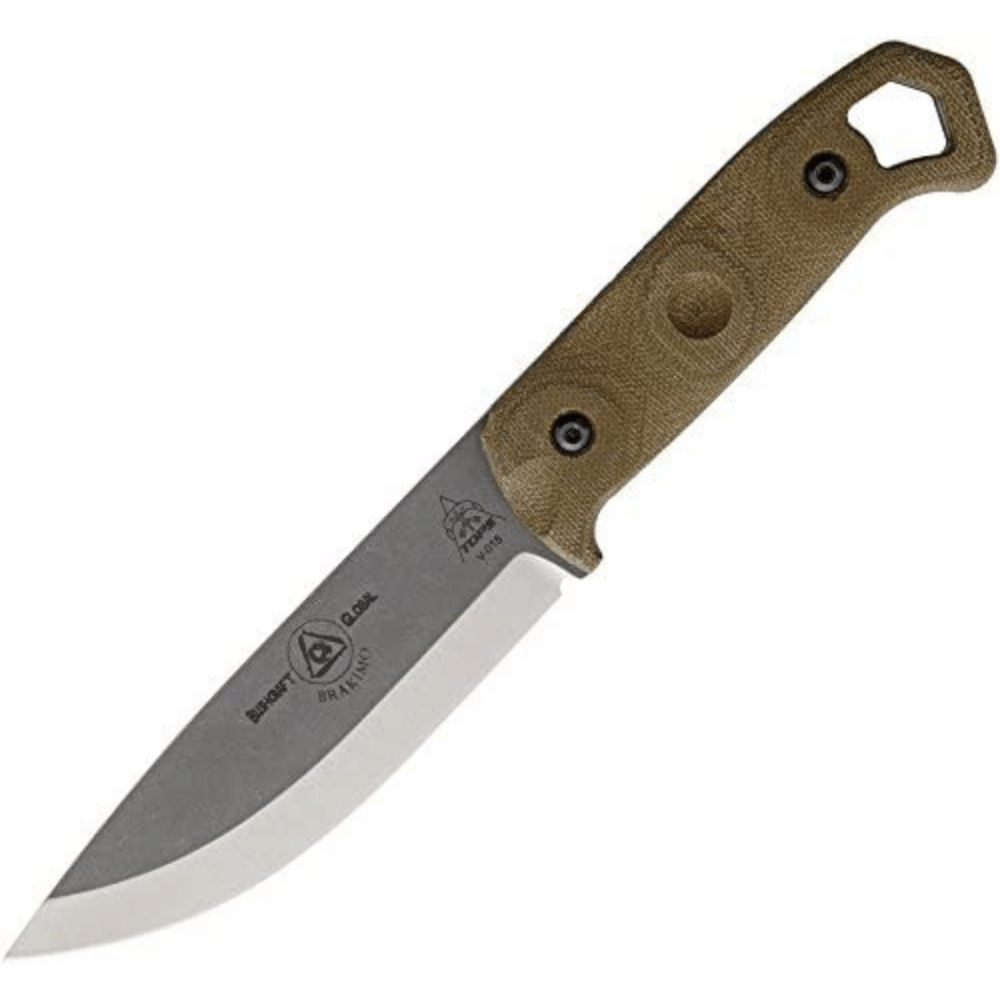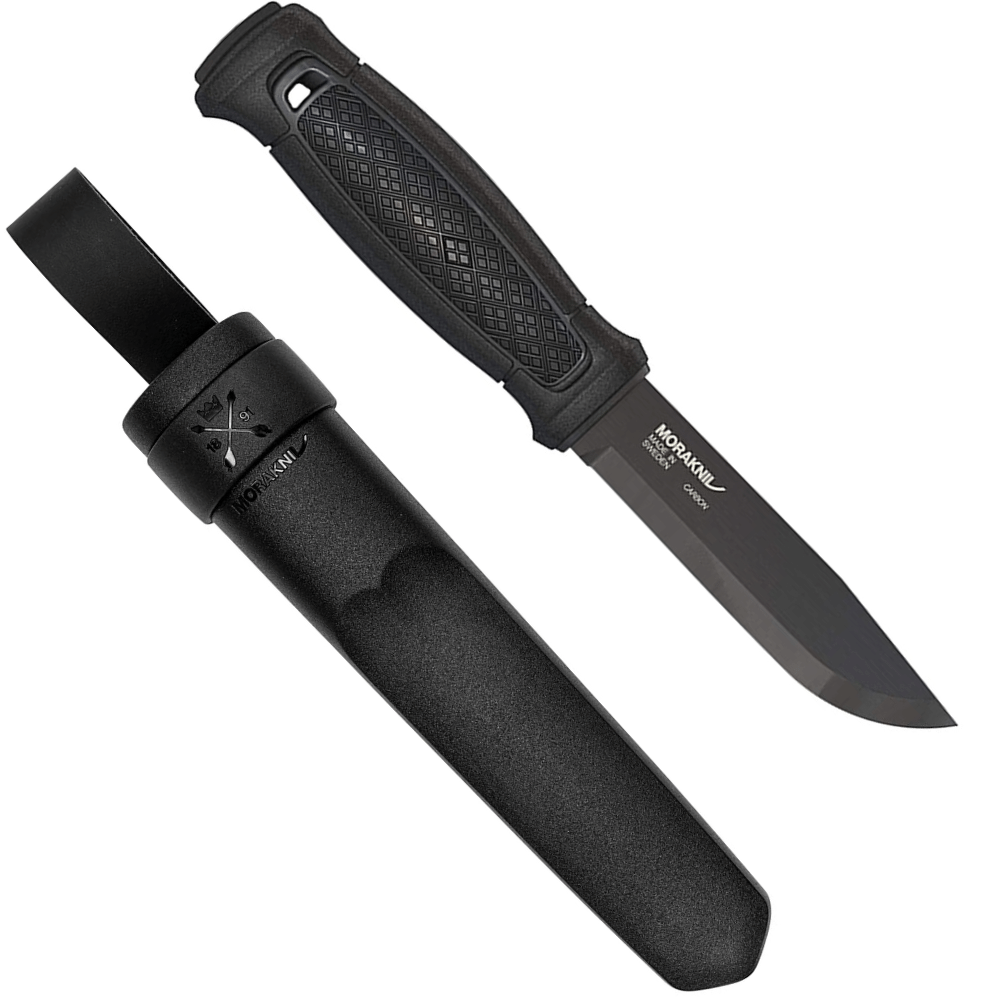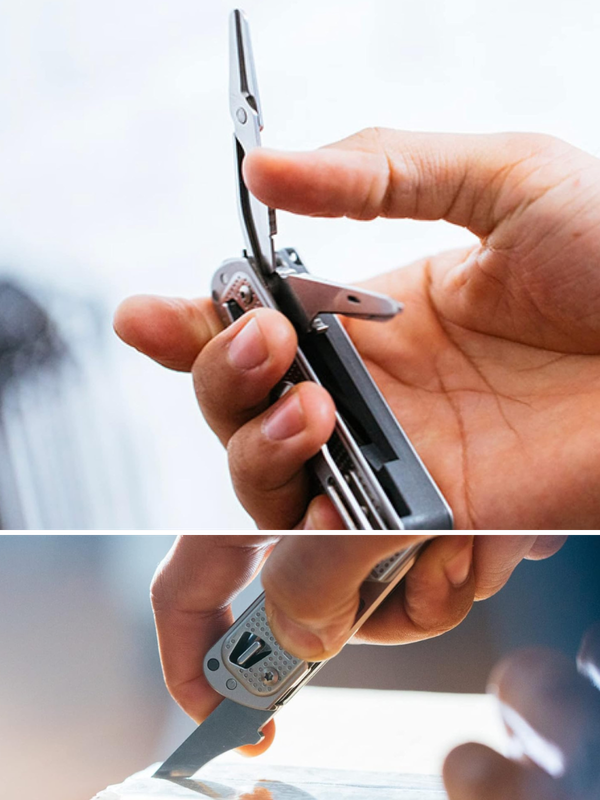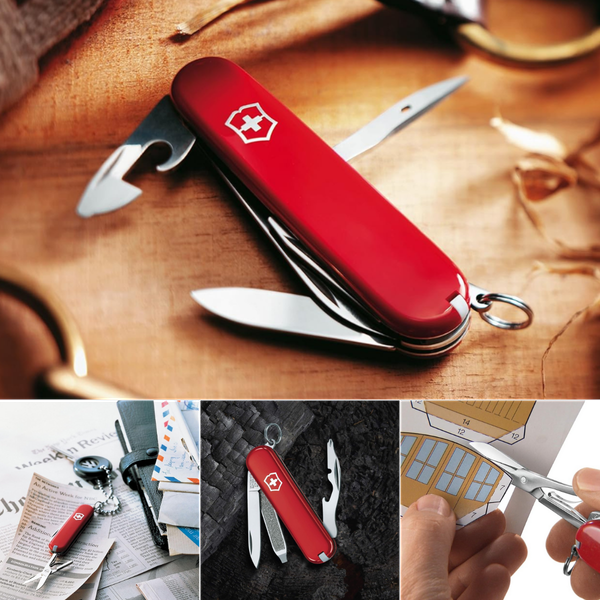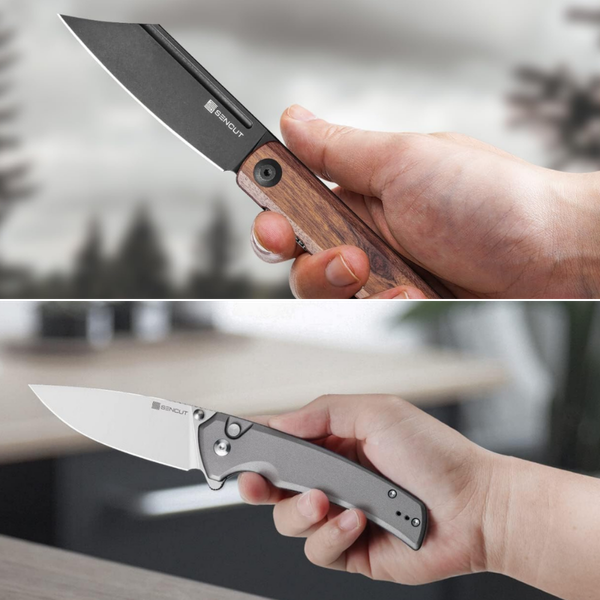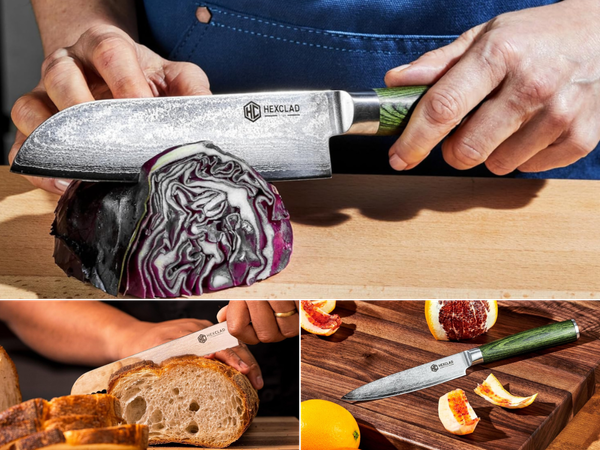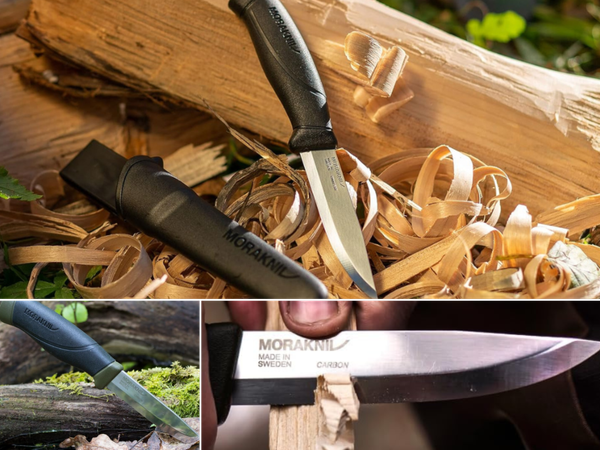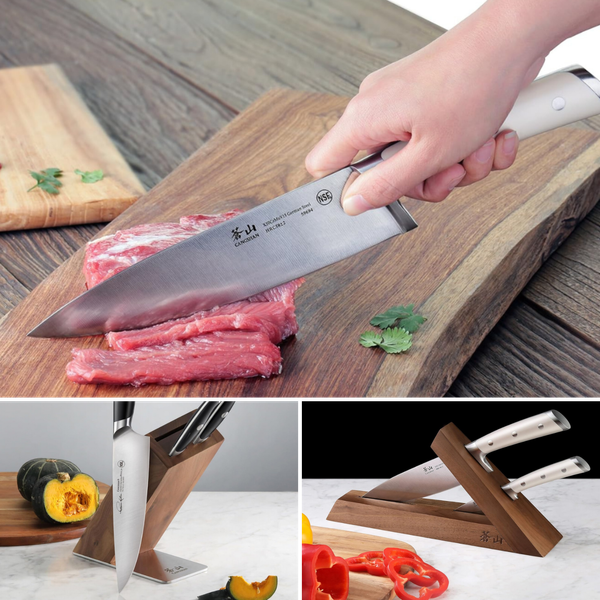This site contains affiliate links. As an Amazon Associate, I earn a commission from qualifying purchases at no extra cost to you. Full Disclosure Here.
The backcountry is a tough place - it can change from moment to moment with the weather sometimes coming in an instant. That's why outdoor enthusiasts know they need quality gear like dry sleeping bags that will keep them warm on those cold, wet nights so their morning isn't ruined by hypothermia or other emergencies caused by uncomfortable conditions.
There are a lot of excellent bushcraft knives out there, but not all will do the job when you need them. You want something reliable and capable so your next hunt doesn't have to be interrupted by worrying about whether or not it can cut through tough brush without breaking apart on impact!
What is a bushcraft knife?
The best bushcraft knives are the most versatile and valuable type of cutlery in an outdoor enthusiast's arsenal. These fixed blade instruments can perform a variety of tasks from building shelters to starting fires with Ferro rods or batoning wood into shape using just one tool.
A bushcraft knife is a versatile tool used for survival in the wild. It has an effective cutting edge and can be sharpened easily along its entire length, making it simple to maintain over time as well as providing increased safety when handling raw materials like wood or hides that may not have been processed beforehand
An example sentence: "The blade on this particular model was made of stainless steel which gave me complete control over how much pressure my hand needed while processing."
Qualities to look for in a bushcraft knife
When looking for a bushcraft knife, you should consider the traits that make up this type of tool. The best bushcraft knife is marketed as such but doesn't meet all these requirements; however, there is not one perfect fit since different people have various needs when it comes to their chosen tools and equipment.
You must also think about what kind of use will be applied most often with your new purchase—maybe someone wants an edge- ceramic steel might better suit them while other folks prefer tougher nonstick surfaces on metal components.
The following passage discusses some important considerations before purchasing something designed specifically as "bushcraft" gear because not every item marketed under those terms actually performs well.
Things to look for in a quality knife
Full tang construction means that the steel which makes up one side of your blade runs through its handle to form a butt. This provides greater durability, but also weighs it down so you'll have trouble slicing vegetables with this type of equipment!
Foldable knives are lightweight and easy to use - just remember, not every model can withstand rigorous tasks like chopping meat or cutting fruit and wilderness survival.
Types of steel
The blade of a bushcraft knife is often made from carbon steel, which can be difficult to maintain and suffers when exposed to an environment with moisture. Stainless steels have been becoming more popular as they're easier on the manufacturing process but retain their edge longer due to their high-quality material properties - making them perfect for tasks that require extra sharpness such as cutting logs or field-dressing game animals!
The downside? While both types do well at sustaining impact forces before failing (carbon), stainless steel is a little more forgiving if you make a mistake while using a sharpening stone.
Handle materials
Wood handles have been a classic look on a bushcraft knife, but they're often not as grippy or lightweight compared to modern synthetic materials. Remember that your camping knife should be primarily just another tool in line with all of the others. You need it so you can use this amazing utensil when needed- sometimes long periods will arise where there's no other option than using what is available!
Don't discount comfort either; if something feels good at first then don’t change anything until it's bad because even though our hands may get tired eventually from holding onto things tightly without rest.
Benchmade - 202 Leuku Knife, Drop Point Blade, Plain Edge, Ranger Green Santoprene Handle
The Leuku is a bushcraft knife designed to be versatile and durable. Benchmade found inspiration in the knives used by indigenous Scandinavians known as Sámi people, including their long blades with broad tips that can handle various tasks from cutting wood or shelter material up close while still being able to withstand rougher treatment at distance without breaking off too easily.
They also have super grip pads on handles so users don't slip when handling wet surfaces--perfect for outdoorsmen who may need both versatility AND protection! This new Benchmade model has a shorter 5" inch version of this classic design but still includes tough CPM-3V steel construction which makes them resistant against sudden impacts like dropping your tool onto rocks.
Blade Length: 5.19 inches
Blade Material: CPM-3V steel
Blade Type: drop point, flat grind, plain edge
Handle Material: Santoprene
Weight: 5.31 ounces
KA-BAR Becker BK2 Campanion Fixed Blade Knife
The KA-BAR BK2 Campanion is a 10.75 inch straight up damage knife with an agile, flat ground blade coated in protective black finish measuring 5 inches long and weighing a quarter of a pound; it's also equipped to split kindling or pry apart joints just as happy as it does chopping onions for your campfire chili!
The KA-BAR Companion is a must-have for any outdoor enthusiast. It can cut through almost anything with ease and its finish makes it very hard to see, making this knife perfect for survival situations where concealment matters most!
Morakniv Companion Spark 3.9-Inch Fixed-Blade Outdoor Knife and Fire Starter
The versatile fixed-blade outdoor knife and fire starter have everything you need for all sorts of adventures, with an incredible design that includes a 3.9-inch hard steel blade ideal to cut through tinder or carve meat on sticks!
It also comes equipped as both kit's handle house two replaceable alcohol-based flints which can be used when wet so they don't go dull quickly as other types might do; plus this tool includes another bonus feature - integrate magnesium alloy spark core capable of producing 3000 degrees C (5 400 F) sparks.
CRKT Parascale EDC Folding Pocket Knife with Deadbolt Lock, Heavy Duty Everyday Carry, Drop Point Satin Blade, Cord-Wrapped Handle, Thumbstud 6235
The CRKT Deadbolt folding knife is the best bushcrafting tool you'll ever need. Thanks to its tough steel bolts and one-button disengagement, this sturdy blade can take on any rigorous task with ease, perfect for camping knives and for outdoor tasks, and overall one of the best knives available.
Four feet of paracord attached means that no matter where your adventure takes place there will always be enough cord for what needs doing - from climbing up mountainsides or spanning wide rivers without fear (or worry) about running out in midair while trying to swing across using just ropes alone as leverage; all thanks again those handy little locks called "Deadbolts".
Blade Length: 3.19 inches
Blade Material: D2 steel
Blade Type: plain edge, drop point
Handle Material: glass-reinforced nylon
Weight: 5 ounces
JEO-TEC Nº15 Bushcraft Survival Hunting Knife - BOHLER N690C Stainless Steel, Multi-positioned Sheath - Handmade
Jeo-Tec's knives are made for tough jobs, and this No 18 is no exception. The blade has razor-sharp Sandvik steel that'll handle even the roughest conditions with ease thanks to the superior corrosion resistance qualities of the material itself as well as carefully designed construction methods which means you don't have to worry about getting your hands dirty while completing tasks around camp or at home!
But if looks matter too then rest assured knowing there's always an option available from Jeotec where we wrap our handles in beautiful and durable Cocobolo woods sourced all over Central America ensuring every knife comes ready beautifully.
Blade Length: 5.51 inches
Blade Material: Böhler N690 Cobalt with HRC 56-58
Blade Type: plain edge, drop point
Handle Material: micarta, cocobolo wood
Weight: 14.1 ounces
ESEE-5 Fixed Blade Knife, 3D Contoured Handle, 1095 Carbon Steel, Ambidextrous Kydex Sheath, Made in USA
Designed by military SERE instructors, the ESEE-5 is a survival knife meant for tough situations.
The ergonomic grip featuring micarta makes it durable and easy to hold onto while you're fighting off creatures or extricating yourself from an emergency situation with sharp objects nearby; plus its steel blade has been coated so that rust won’t be able to attach itself too quickly which means this tool will last longer than most others out there on your search (or rescue) mission with this legendary knife.
Blade Length: 5.25 inches
Blade Material: 1095 carbon steel
Blade Type: drop point, serrated, plain edge
Handle Material: Canvas Micarta
Weight: 16 ounces
Fallkniven A1 Fine Edge Fixed Blade Knife, Black
The A1 knives from Sweden are known for their quality and performance. These particular blades have been designed to meet international standards of security, making them perfect backcountry tools that can take on any task you throw at it!
The full tang construction provides durability while the laminated VG10 steel ensures sharpness whether cutting or shaving wood without worrying about corrosion inhibiting your progress like other metals do over time due to saltwater environments where this type may not be used effectively because they're too exposed but CeraKote coating prevents reflection which makes these awesome slicers even better when out exploring in nature vs fighting animals.
Blade Length: 6.3 inches
Blade Material: VG-10 steel
Blade Type: drop point, plain edge
Handle Material: Kraton
Weight: 11.3 ounces
Fallkniven F1, Thermorun Handle, Plain, Zytel Sheath
Fallkniven has been making bushcraft knives for over half a century, and their F1 is the premium pick among bushcraft blades. Though its price went up in recent years due to handmade process reasons, Fallkven's factory efficiency now makes this something of a bargain - with its Thermorun handle swelling slightly when held by your palm while still being serviceable enough if you need just one light-duty tool against whatever may come across yours soon enough!
The most selling point about these gorgeous 3-inch full tang sandwiches comprised of two slabs made out of steel: VG10 combined together nicely thanks also from 420 grade which provides both edge retention as toughness.
Overall Length: 8 1/4" overall.
Blade Length: 3 3/4" laminate VG-10 stainless steel drop point blade, satin finish.
Handle Material: Black checkered Thermorun elastomer handle
TOPS Knives Brakimo Fixed Blade Survival Knife Modified Scandi BRAK-01
The TOPS Brakimo is a big, bold knife that’s designed for heavy use outdoors. In our testing we split logs and shaved branches down with ease before stripping saplings of their brush with just one cut - this thing handles anything from the kitchen prep to back-tooth yard work! And since it can take whatever you throw at its blade (except perhaps corrosion) there's no reason not to give your favorite grinder some love by adding an extra thumb stud so they'll never lose track again when cutting through tough materials like wood or bone tabs during surgical procedures.
The Brakimo is not perfect, but it comes close. The 1095 blade has a cerakote finish that can be easily scratched by rocks and other hard substances; however, this same property makes the steel more resistant to rusting in wet environments where saltwater may come into contact with your knife for hours on end during outdoor activities such as fishing or camping trips through wilderness areas without any form of protection against natural elements like windstorms etcetera.
Morakniv Garberg Full Tang Fixed Blade Knife with Carbon Steel Blade
Morakniv has made our buying guides at least three times as a fantastic option for people who want knives that punch so far above their weight, it’s almost criminal. The Swedish company does one thing extremely well and that is to make durable Scandi-grind pocketknives meant to be used abused or resharpened in the field.
The Garberg is an excellent choice for military applications, as it's compact enough to wear on your belt or pack. It features the same Scandi grind as many other knives on this list making it great at bushcraft tasks like striking Ferro rods and scraping wood shavings together into kindling!
Morakniv's carbon blade steel is essentially Swedish 1095 and as such, it can be resharpened easily. It also holds an aggressive edge with the right maintenance approach in mind - but not only that!
The Garberg excels at making incredible blades; they're not so good when crafting sheaths though (though all three options offer poor designs). A polymer stock sheath clip-on flimsy belt holster or leather handle provides little retention without any snap closure panel while MOLLE multi-mounting takes up too much space on your rifle/carbine groove.
Blade material: UHB-20C (suspected)
Handle material: Polyamide
Blade grind: Scandi grind
Blade length: 4.3 inches
Things To Consider When Buying A Bushcraft Knife
When considering the best bushcraft knives, it's important to think about what you'll be using your blade for. A lot of people might assume that all blades are created equally but this couldn't be farther from true! The type and quality of the material will affect how well they work in different applications which means choosing one depends on exactly where it's being used - whether delicate tasks like filleting fish or heavy-duty jobs such as chopping wood.
Important Features Of Bushcraft Knives
Type of blade grind
For bushcraft, a blade grind is a demand rather than a suggestion. The type of ground edge must be set up for durability above all else and prioritize cutting through the brush which leads to Scandi-style knives dominating this market with flat or saber-shaped blades being common in most cases as well because they’re better suited for tasks like batoning logs while stripping saplings bark without damaging its integrity too much, either way you look at these things!
90-degree spine
The fire steel is an essential part of any outdoor adventurer’s gear. It provides the user with sparks when they need them most, allowing you to build up your kindling supply quickly and easily in order for a quick getaway or emergency situation
A crucial survival task becomes easier if we have access to quality tools that can withstand tough conditions like striking flints from stones without causing too much damage on either end—especially during times where there may not be many other options available! A good way around this problem would involve using spine ridges near ideally-flattened edges instead; though it takes longer than just strikes directly against metal surfaces (such as those found inside knives), these kinds serve their purpose.
Full tang
The durability of this knife is unbeatable. This type of tang means the blade runs all along its length and it's thicker at some points to ensure there aren't any gaps in your grip when you handle things carefully because if they do then sharp objects could easily cut through them without much effort on their behalf! This also makes for an excellent high-impact task like bushcrafting where striking blades come into contact with rocks often as well as other hazards not seen elsewhere - making sure these durable materials protect us during even our most rigorous activities.
Exposed tang
The exposed tang of this knife means that it can be used for scraping shavings from a log, as well as kindling and even firesteel. If your car is upside down in water or if you've been involved in an accident then there's no need to worry because the blade termination stops just above where metal attaches to the handle so all we'll have left over after using these items are sharp edges!
FAQ's
What is the difference between a bushcraft and a survival knife?
A bushcraft knife is a great all-around knife for campers, hunters, and outdoor enthusiasts. It can be used for camp jobs like splitting logs and preparing meals, as well as more serious survival tasks like making a shelter or constructing traps.
It should have a strong blade that can stand up to heavy use, a comfortable handle that won’t slip in your hand even when wet, and a durable sheath to protect the blade when not in use.
There are many different bushcraft knives on the market, so it’s important to find one that suits your needs. Some of the best bushcraft knives include the Morakniv Bushcraft Survival Knife.
What makes a knife bushcraft?
Bushcraft knives are designed for a variety of outdoor tasks, including but not limited to carving, chopping, slicing, and batoning. A bushcraft knife should have a full tang so that it can withstand the stress of vigorous use; a durable blade that is at least 4-6 inches in length (ideally 8-10 inches); and a comfortable yet sturdy grip.
There is no one "best" bushcraft knife on the market. However, some knives that come highly recommended include the Morakniv Bushcraft Carbon Steel Knife, the ESEE Junglas Knife, and the Boker Plus 01BO009 Becker Knife.
What is the best bushcraft knife brand?
Bushcraft knives come in all shapes and sizes, but there are a few things you should look for when choosing one. First, the knife should be made of high-quality stainless steel so that it doesn't rust or corrode in wet environments. Second, the blade should be durable and able to withstand a lot of wear and tear. And finally, the knife should feel comfortable in your hand so that you can use it for extended periods of time without getting tired.
Are bushcraft knives any good?
Bushcraft knives are some of the best knives around. They're designed for tough, outdoor use and can handle a variety of tasks.
When choosing a bushcraft knife, it's important to consider the blade length and type.
What size should a bushcraft knife be?
Bushcraft knives come in all shapes and sizes, but there are a few things to keep in mind when choosing the best bushcraft knife for you. First, consider what you will be using your knife for. Are you looking for a general-purpose knife that can handle a variety of tasks? Or do you need something more specific like a carving knife or skinning knife?
Do I need a survival knife?
Bushcraft knives are designed for a variety of purposes, including precision woodworking and delicate carving, as well as rugged fieldcraft tasks such as batoning and notching. In bushcraft, you will use your knife for everything from fine whittling to demolishing camp chores. So do you need a bushcraft knife? The answer is an unequivocal yes!
What's the difference between survival and bushcraft?
The biggest difference between survival and bushcraft is the emphasis on being able to live off the land. With survival, the focus is more on simply staying alive in a difficult situation, while bushcraft is about thriving in the wilderness. As such, Bushcraft often involves learning skills like building shelters, finding food and water, making fires, and so on.
One of the most important tools for any bushcrafter is a good knife. A knife can be used for everything from chopping wood to the skinning game, and a good bushcraft knife will be sturdy and versatile. There are a lot of different types of bushcraft knives out there, so it's important to do some research to find the one that
What is batoning with a knife?
Batoning is a technique often used by bushcraft enthusiasts and survivalists to split wood using a knife. The idea is to use the weight of the knife and your body weight to push the blade through the wood.
There are many different ways to do this, but the general idea is to place the blade at an angle that you're comfortable with (usually about 45 degrees) and then strike the spine of the knife with a piece of hardwood. You can also use a baton (a small, round piece of wood) to help drive the blade through if needed.
Be sure to use a good-quality bushcraft knife for this activity, as cheaper knives are more likely to break under pressure.


